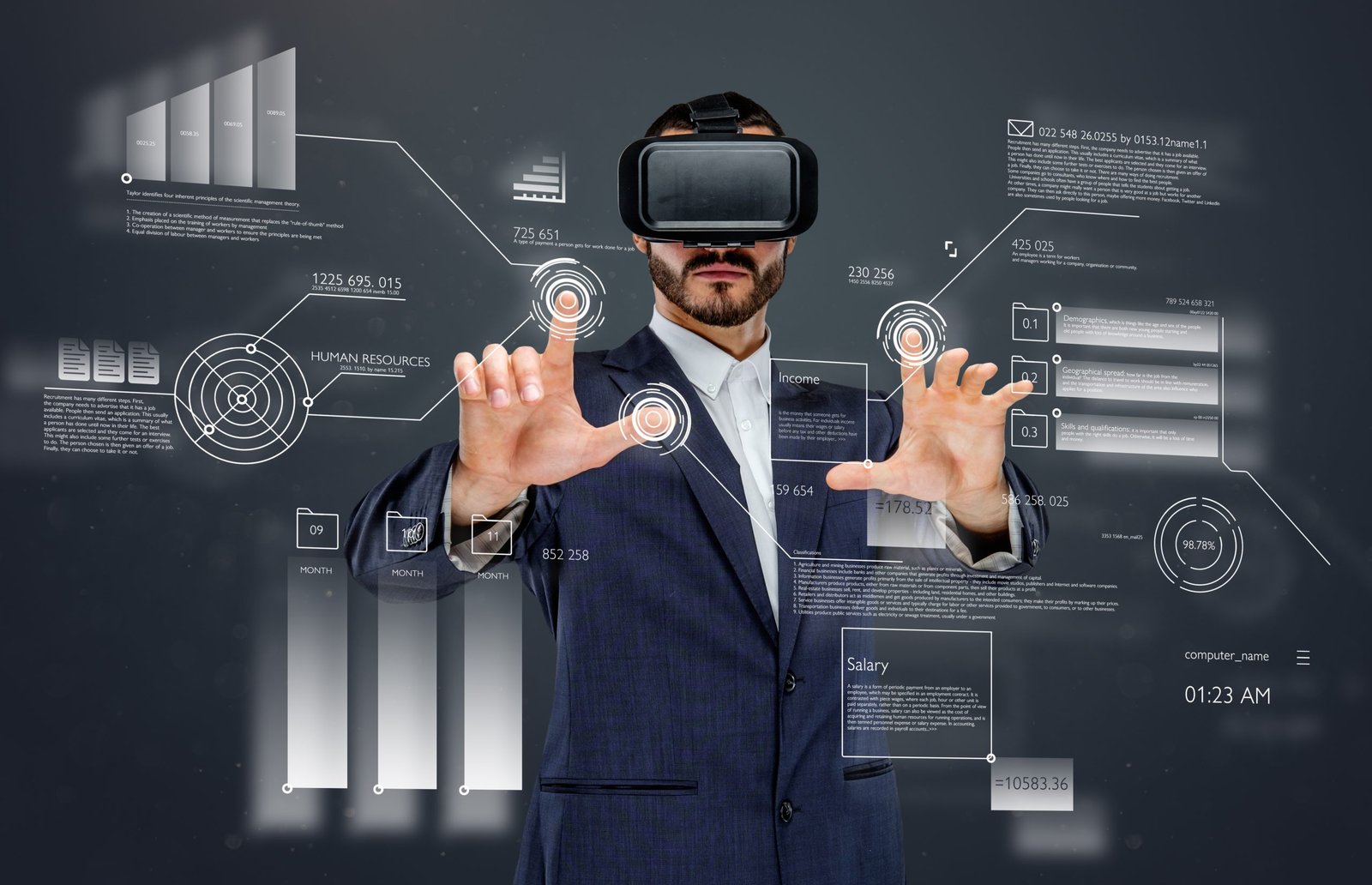The Future of Marketing in 2025: New Trends, Innovations, and Strategies You Need to Know
Marketing is an ever-evolving field, and as we head into 2025, the pace of change is accelerating. From artificial intelligence (AI) and voice search to immersive experiences with augmented reality (AR), new tools and technologies are reshaping how businesses connect with their customers. In this article, we explore the top marketing trends to watch for in 2025 and provide insights into how companies can stay ahead of the curve and adapt their strategies to meet the demands of a rapidly changing marketplace.
1. AI-Powered Personalization: The New Standard
Artificial intelligence is no longer just a buzzword—it’s an integral part of the marketing toolkit. By 2025, personalized marketing powered by AI will be the standard, not the exception. AI enables businesses to deliver highly tailored experiences that resonate with customers on an individual level. Here’s how:
- Dynamic Content Customization: AI algorithms can analyze user behavior, preferences, and previous interactions to deliver dynamic content tailored to each customer’s needs. Whether it’s personalized email campaigns, product recommendations, or website experiences, AI ensures that each customer gets the most relevant messaging.
- Predictive Analytics: AI tools are increasingly being used to predict customer behavior, helping businesses anticipate what a customer might want next. This enables brands to be proactive, offering the right products at the right time, thus boosting conversion rates and customer loyalty.
- Chatbots and Virtual Assistants: AI-driven chatbots are becoming more sophisticated, providing real-time customer service and personalized recommendations. These tools are available 24/7, ensuring a seamless customer experience that meets the demands of today’s on-the-go consumers.
As AI continues to evolve, marketers will have even more sophisticated tools at their disposal to engage consumers with hyper-personalized content and messaging, driving both satisfaction and revenue.
2. Voice Search and Conversational Marketing
With the widespread adoption of voice-activated devices like Amazon Alexa, Google Assistant, and Apple’s Siri, voice search is becoming a central part of how people interact with technology. By 2025, it’s estimated that over 50% of all searches will be voice-based. This shift is forcing businesses to rethink their digital marketing strategies to optimize for voice search and conversational marketing.
- Optimizing for Voice Search: Voice search queries tend to be longer and more conversational than text-based searches. Businesses will need to adapt their SEO strategies to account for natural language, focusing on long-tail keywords and question-based queries (e.g., “What is the best coffee shop near me?”).
- Conversational Commerce: With the rise of voice search comes the opportunity for conversational commerce—where brands use messaging platforms and voice assistants to engage customers in real time. This could involve direct purchases through voice-activated shopping or using chatbots to guide customers through the buying process.
For marketers, embracing voice search and conversational marketing is key to staying relevant in 2025, as voice-based interactions continue to grow in popularity.
3. Immersive Experiences with AR and VR
Augmented reality (AR) and virtual reality (VR) technologies are opening up new possibilities for marketers to create immersive and interactive experiences for their customers. By 2025, we expect these technologies to be fully integrated into mainstream marketing strategies. Here’s how AR and VR will change the way brands interact with their audiences:
- AR-Enabled Shopping: Retailers are already using AR to allow customers to try before they buy. For example, furniture stores like IKEA use AR apps to show customers how a piece of furniture would look in their homes. In 2025, expect AR to be used widely for everything from virtual try-ons for fashion to visualizing products in real-world environments.
- VR Brand Experiences: VR can transport customers into fully immersive brand experiences. Companies will use VR to create virtual showrooms, offer virtual tours, or even create immersive storytelling experiences that allow customers to interact with the brand in a completely new way.
- Enhanced Ads: AR and VR can also revolutionize how brands deliver advertisements. Instead of traditional 2D ads, businesses can create interactive ads where consumers can engage with the brand directly, increasing brand recall and engagement.
As consumers become more accustomed to these technologies, businesses will need to create compelling, immersive experiences to capture their attention and drive loyalty.
4. Influencer Marketing 2.0: Micro and Nano Influencers
Influencer marketing has been one of the most effective strategies in recent years, but by 2025, the focus is shifting. While macro-influencers with millions of followers will still be relevant, the spotlight is turning toward micro and nano-influencers—individuals with smaller, but highly engaged audiences. Here’s why:
- Authenticity Over Reach: Consumers are becoming more skeptical of traditional advertising and celebrity endorsements. They prefer relatable, authentic influencers who have a genuine connection with their followers. Micro and nano-influencers often have a closer, more personal relationship with their audience, which leads to higher trust and engagement.
- Better ROI: Brands are realizing that partnering with influencers who have smaller, but highly targeted followings can yield a higher return on investment (ROI). With lower costs and more engaged followers, these influencers provide a cost-effective way to reach a niche market.
- Niche Marketing: Micro and nano-influencers often specialize in specific topics or niches, such as fitness, beauty, or eco-friendly living. This allows brands to target highly specific demographics, ensuring their products are seen by the right people.
By 2025, influencer marketing will focus more on genuine relationships and niche expertise, rather than just follower count, providing a more meaningful way to engage consumers.
5. The Dominance of Video Marketing
Video continues to be one of the most powerful forms of content, and its influence will only grow in 2025. Whether it’s short-form content on TikTok or long-form content on YouTube, video has proven to be an effective way to engage and convert audiences. Here’s why video marketing will dominate:
- Short-Form Video: Platforms like TikTok and Instagram Reels have popularized short-form video content, which is expected to become even more dominant by 2025. These bite-sized videos allow brands to capture attention quickly and creatively, often leading to higher engagement rates.
- Live Streaming: Live streaming is becoming increasingly popular across social media platforms, allowing businesses to interact with customers in real time. Live events, product launches, behind-the-scenes content, and Q&A sessions create a sense of immediacy and exclusivity.
- Shoppable Videos: With the rise of e-commerce, video content is becoming shoppable. Platforms like Instagram and YouTube allow users to purchase products directly through videos, reducing friction in the buying process and creating a seamless shopping experience.
For marketers, video is not just an optional medium—it’s a necessity for reaching today’s audiences. Brands that create engaging, high-quality video content will have a competitive edge in 2025.
6. Sustainability and Purpose-Driven Marketing
As consumers become more socially and environmentally conscious, sustainability is a key factor influencing purchasing decisions. By 2025, purpose-driven marketing—where brands align with causes that resonate with their customers—will become increasingly important. Here’s why:
- Consumer Demand for Ethical Brands: More consumers are looking to buy from brands that align with their values. From reducing carbon footprints to supporting fair trade practices, brands that demonstrate a commitment to sustainability and ethical practices will be rewarded with customer loyalty.
- Transparency and Accountability: In 2025, consumers will demand more transparency from brands about their supply chains, sourcing practices, and environmental impact. Brands that authentically share their sustainability efforts and hold themselves accountable will build trust with consumers.
- Social Responsibility: Companies that actively contribute to social causes, such as racial justice, gender equality, or poverty alleviation, will stand out in the crowded marketplace. Purpose-driven marketing isn’t just about promoting products—it’s about creating a positive impact on society.
Businesses that embrace sustainability and social responsibility in their marketing strategies will not only attract conscious consumers but also drive long-term growth.
Conclusion
The marketing landscape in 2025 will be marked by rapid technological advancements, changing consumer behaviors, and a greater focus on authenticity and purpose. From AI-powered personalization and voice search to immersive AR/VR experiences and purpose-driven marketing, businesses will need to adapt their strategies to stay relevant in a fast-evolving market. Marketers who embrace these trends will be able to create deeper connections with their audiences, drive more meaningful engagement, and achieve sustained growth in the years to come.













